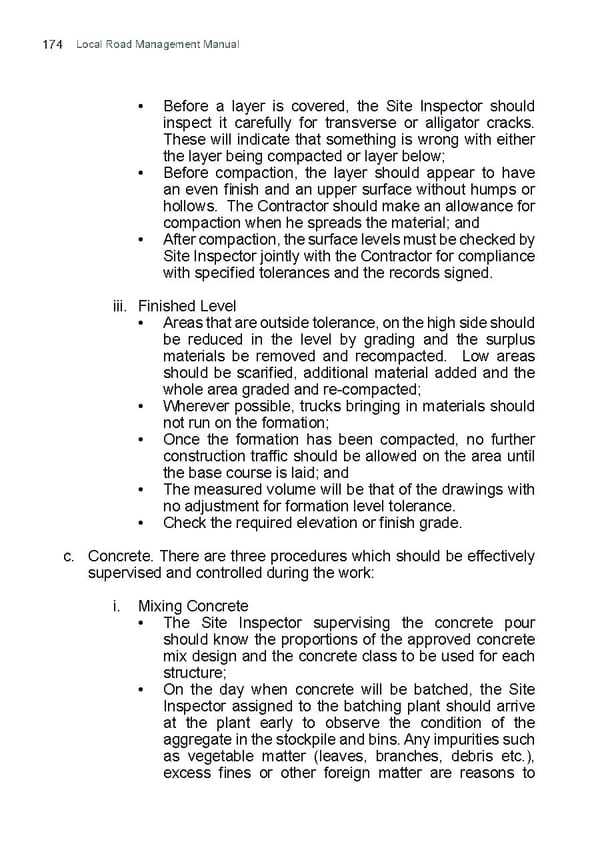Local Road Management Manual 174 • Before a layer is covered, the Site Inspector should inspect it carefully for transverse or alligator cracks. These will indicate that something is wrong with either the layer being compacted or layer below; • Before compaction, the layer should appear to have an even finish and an upper surface without humps or hollows. The Contractor should make an allowance for compaction when he spreads the material; and • After compaction, the surface levels must be checked by Site Inspector jointly with the Contractor for compliance with specified tolerances and the records signed. iii. Finished Level • Areas that are outside tolerance, on the high side should be reduced in the level by grading and the surplus materials be removed and recompacted. Low areas should be scarified, additional material added and the whole area graded and re-compacted; • Wherever possible, trucks bringing in materials should not run on the formation; • Once the formation has been compacted, no further construction traffic should be allowed on the area until the base course is laid; and • The measured volume will be that of the drawings with no adjustment for formation level tolerance. • Check the required elevation or finish grade. c. Concrete. There are three procedures which should be effectively supervised and controlled during the work: i. Mixing Concrete • The Site Inspector supervising the concrete pour should know the proportions of the approved concrete mix design and the concrete class to be used for each structure; • On the day when concrete will be batched, the Site Inspector assigned to the batching plant should arrive at the plant early to observe the condition of the aggregate in the stockpile and bins. Any impurities such as vegetable matter (leaves, branches, debris etc.), excess fines or other foreign matter are reasons to
 Local Road Management Manual Page 174 Page 176
Local Road Management Manual Page 174 Page 176